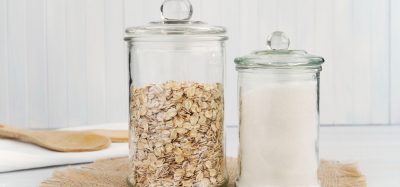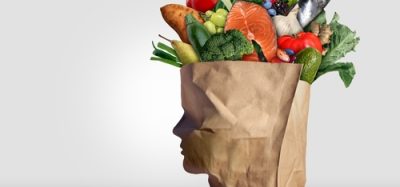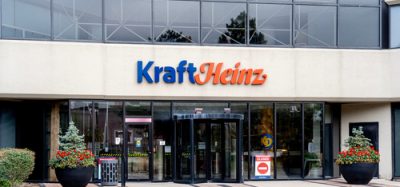An interview with Dairy Crest on recent performance and innovation
- Like
- Digg
- Del
- Tumblr
- VKontakte
- Buffer
- Love This
- Odnoklassniki
- Meneame
- Blogger
- Amazon
- Yahoo Mail
- Gmail
- AOL
- Newsvine
- HackerNews
- Evernote
- MySpace
- Mail.ru
- Viadeo
- Line
- Comments
- Yummly
- SMS
- Viber
- Telegram
- Subscribe
- Skype
- Facebook Messenger
- Kakao
- LiveJournal
- Yammer
- Edgar
- Fintel
- Mix
- Instapaper
- Copy Link
Posted: 14 November 2016 | New Food | No comments yet
CEO Mark Allen and FD Tom Atherton update on performance and innovation across the key brands plus the factors behind the numbers including an improvement in cash flow and increase in net debt…
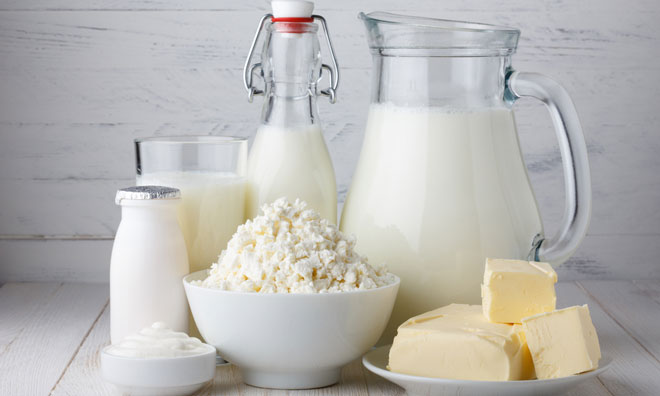

CEO Mark Allen and Financial Director Tom Atherton at Dairy Crest give their update on performance and innovation across the key brands plus the factors behind the numbers including an improvement in cash flow and increase in net debt…
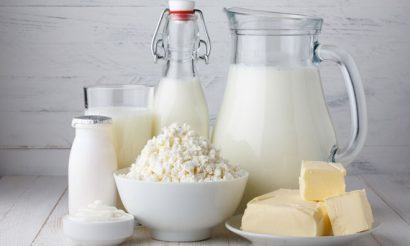

Firstly, we hear from Mark Allen on the results and brand performance:
This is your first full set of results since completing the sale of the dairies business. How would you summarise first-half performance?
I’m really pleased. We’re starting to see the benefits of our new smaller, leaner business. Profits are up around 20%, our brands are growing at around about 2% in volume terms, and we have started production of our galacto-oligosaccharide and demineralised whey down at Davidstow.
Cathedral City is normally a star performer for Dairy Crest but you’ve experienced falls in both volume and value in the first half. What’s gone on there and what’s the outlook for the second half?
It’s still a star performer. We’ve rebranded in the first half and I’m very pleased with that. It looks good in store, we’ve got new advertising that’s gone out and consumers are telling us they like that. It’s sold to around about 60% of the population in the UK and we’ve got an exciting future with some of the new innovation that we’ve got coming forward. I’m anticipating the second half will again revert to growth as well as a stronger performance in the second half.
You’ve delivered a strong first half in Butters and Spreads. What’s behind that?
I’m delighted with the performance of Butters and Spreads and the first half of this year really is a follow-on from the second half of last year where we did very well and a couple of things have happened to deliver that performance. In the case of Country Life, we’ve re-positioned the brand and focused on its British heritage, promoted it a little bit more, and consumers have bought into that. As far as Clover is concerned, we focused on the naturalness of the brand and took out the artificial ingredients, and again it looks like that resonates with consumers, and the brand has performed very well on the back of it.
So what do you expect in the second half?
I think in the case of Country Life, it’s going to be a little bit tougher in the second half. There’s a lot of inflation in the cost of cream at the moment and that might have an impact on volumes. As far as Clover is concerned, I think the work we’ve done on the naturalness will mean that we continue to perform very well.
Now let’s talk about Frylight, 16% increase in volume and value during the first half. What’s behind this, and do you think you can continue this impressive momentum?
This is a fantastic brand and a fantastic story. It’s now bought by about one in five homes in the UK. Again the naturalness comes through; we focus on the naturalness of the brand, but we also focus on the ability to control calories. Consumers and our customers seem to be buying into that and buying it consistently in greater volumes. We’ve also had a lot of innovation. We’ve launched a couple of new products in coconut oil and rapeseed oil, and we’ve got some further innovation coming. So I’m really excited about the prospects of Frylight.
Innovation has long been a priority for Dairy Crest. How are you performing against your target of 10% of sales coming from new products and what’s in the pipeline?
10% of sales is a really stretching target and we’ve done very well against that target over a number of years now. This six months provide no exception. Around about 13% of our sales are from products that we developed in the last three years. That’s an industry leading statistic. Our pipeline looking forward is as strong as the history. We’ve got a number of interesting developments. In particular in Cheese, we’re looking at our spreadable range, we’re also looking at convenience snacking food on-the-go, and we’re looking at reformulation of some of our Spreads to make them even more healthy. Then finally in Frylight, we’ll be launching a new avocado product in the very near future.
We’ve been in full production since May. It’s a little bit later than we would have hoped; we had some snagging with the factory, it’s a big investment. But we’re pleased with progress. It’s becoming more efficient by the day. Our wastage is dropping by the day, and we’d expect to achieve our targets of 80% of the product that we make going into infant formula grade by the end of this year.
You’ve updated the market on your R&D around galacto-oligosaccharide. Could you tell us a bit more about what you’ve been doing and the opportunity ahead?
The original investment in galacto-oligosaccharide was based on infant formula. Around about 8% of breast milk is galacto-oligosaccharide. The benefit that the baby gets from that is a healthy gut. That same principle stands true in the animal world, and in particular in monogastrics like chickens and pigs and we’ve been doing some work with a number of universities over the last two or three years looking at the impact of feeding GOS to both chickens and pigs. If I concentrate just on chickens, we know now in academic trials that when we give GOS to a chicken as part of its diet it grows quicker. The feed conversion ratio – that means the amount of feed it takes for the chicken to grow – is less… less food is required. That’s good for the chicken producers and finally, we know the birds are more healthy. They have mortality benefits; they have general health benefits; and it has an impact on pathogens, so things like campylobacter and salmonella. It’s really exciting. We’ve proven it in laboratory trials and academic trials, and we’re about to move onto commercial trials in a number of places around the world.
An now Dairy Crest offer an insight into the financials with Tom Atherton:
What’s your take on the key numbers in today’s announcement?
Well I think the first thing for me is that whilst we’re heading into an inflationary period now, the first half was characterised by deflation. And you can see that in the revenue number which fell 7% to £190m. Despite that, we managed to improve our profitability. Our adjusted profit before tax number rose 19% to £19.1m, and both of our business units within that grew their profits which was a good result. The other thing I’d flag is the underlying cash generation, which was much stronger than last year and that’s great for the business going forward.
You talk about cash flow and improved cash flow in the first half. How was that achieved?
I think there are two things really. Firstly, we didn’t have our loss-making Dairies business which was hampering us a year ago. I think the second thing, importantly, was the reduction in capital expenditure and we promised at the year-end that that would come down, and it’s down 70% compared to this time last year. Further to this we only spent £10m. You put those together and that improved our cash generation, despite less help from working capital this year. So operating cash flows before exceptional were up nearly £28m.
You’ve taken on more debt during the half, it’s up 8%. What’s behind this and what’s your plan to reduce debt going forward?
Net debt has gone up in the first half and it normally does. We buy more milk during the spring and summer, during the flush, and that tends to flow into higher levels of stock in the first half. However this year that was exacerbated by a payment we made back to Muller in final settlement of the disposal of our dairies business from the year before. That amounted to £28.5m, and on top of that we had some exceptional spend in relation to the closure of that deal. None of that will repeat in the second half of the year, which means net debt will come down and we remain absolutely committed to reducing net debt to between one and two times earnings.
Efficiency has been a long-term focus for the business. Are you still able to cut costs?
We’re always looking to cut costs and increase efficiency. The sale of the Dairies business reduced our central overheads by about £35m, and they’ll come down again further this year. We’ll constantly look for other things we can do within the business. There’s a big project we’ve just kicked off over the next two years which will be a replacement of all of our core IT systems. Not only will that reduce IT spend, it’ll also simplify the business and allow us to make further cost savings on the back of it. So if I were to put a monetary value on the savings that we feel we can deliver in the short to medium term, I’d expect that to be about £5 million of central costs coming out in the next year or two.
And what will a prolonged weakness in sterling mean for Dairy Crest?
Dairy Crest is predominantly a UK-based business, so most of our costs and most of our sales are in the UK. So all in all, not a huge impact. We will see some inflation in certain areas of our cost base, but for products like demineralised whey or galacto-oligosaccharide, we sell those in euros, so weaker sterling there would offset the costs. So overall not too much of an impact.
Now you’ve proposed a 2% increase in the interim dividend. Are you still committed to a progressive dividend policy despite taking on more debt?
We’re absolutely committed to a progressive dividend policy and we’ve announced an interim dividend increase of 2%, up to 6.2p for this half. The important piece is, as you rightly say, free cash flow cover. As I said earlier, free cash flow is better this year than last and will be better next year than this so the cover for that dividend is increasing. My ambition is to get free cash flow cover in the same place as earnings cover, which is above 1.5 times.
And to conclude, Martin Allen?
We’re now in an inflationary environment. You’ve highlighted the steep increases in milk and cream prices. How do you expect this to affect Dairy Crest? And will the business be able to cope with these pressures?
I think the first point I’d make is you’ve got to look at the history, and in Dairy Crest we’ve been used to dealing with quite sharp inflation and deflation over many years. And I think our track record demonstrates we can deal with it. I think there’s an important point that starts all of this though; the first thing we have to do is look at ourselves to make sure our cost base is as low as we possibly can be, to minimise the impact on our customers, and ultimately consumers. We’ll work with our customers over the coming weeks and months to make sure that we have a fair process in dealing with that inflation as and when it comes.
So where will you be focusing in the second half and beyond?
Well the first thing we’ll be focusing on is making sure that we continue to get growth in our brands, particularly Cathedral City, and I expect to get growth in the second half. Secondly, to make sure that our production of demineralised whey meets our targets of the grade for infant formula. And then finally continually holding the mirror up to ourselves on costs and making sure we’re as efficient as we can be. Then the final thing that underpins all of that is where appropriate we’ll make sure we advertise and promote our products to make sure they’re top of mind for consumers. If we carry on doing all of that in the way we’ve historically done it, I’m sure we’ll have a successful second half.



